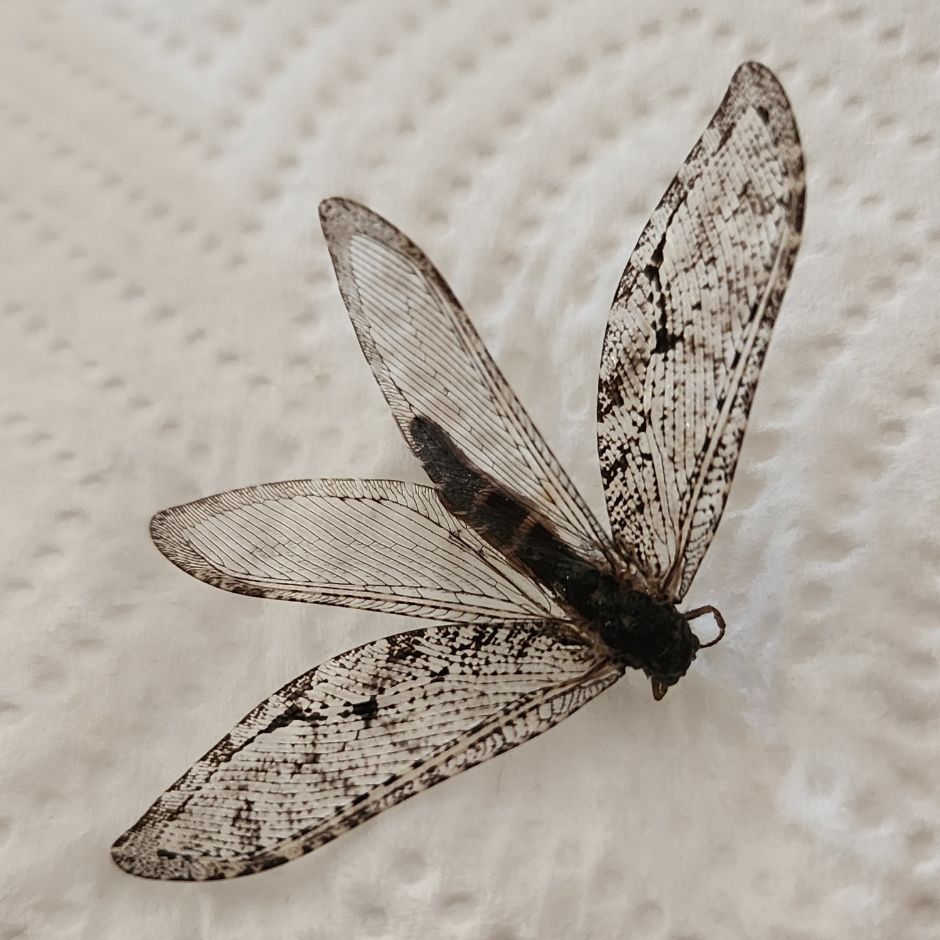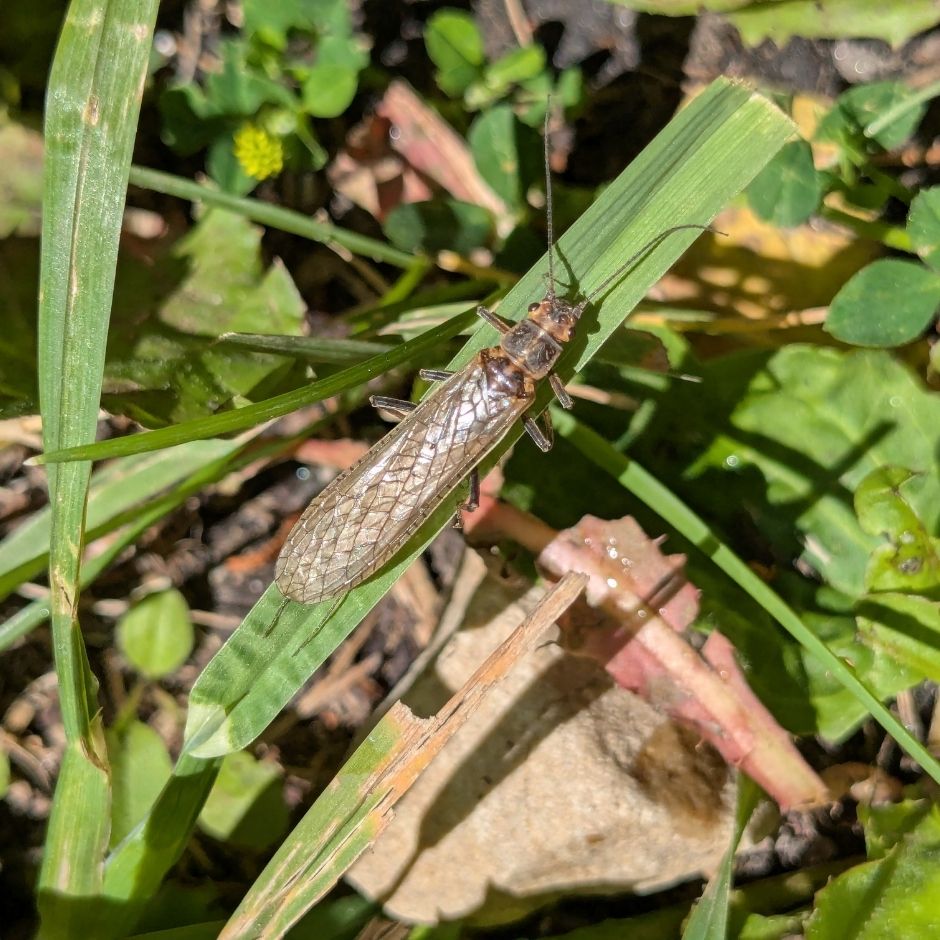Tourist season is hopping, and so are many of the bugs! While you’re out enjoying all the fun activities summer has to offer – gardening, hiking, floating the river, even just picnicking at the local park – be sure to take time to look around, you never know what tiny wonder of nature you might find!
Submit your bug pictures to bugid@missoulabutterflyhouse.org (and remember to include your name, the date, and the location where you took the photo)!
Header photo: Robber flies in the genus Laphria do a convincing job of making you think they are a bee, with many species resembling bumblebees. However, unlike the insects they are trying to mimic, they have no interest in flowers, nectar or pollen. As described in the Kaufman Field Guide to Insects of North America, robber flies “are to other insects what falcons are to other birds: swift predators on the wing.” Adults often sit on a perch, waiting for a flying insect to pass by. As fast and agile hunters, robbers easily dash out to intercept their next meal in mid-flight. – Kristi DuBois, July 10, 2025, Missoula, MT

Plains Bee Assassin
Apiomerus spissipes
As a type of true bug (Order Hemiptera) with piercing and sucking mouth parts, bee assassins wait on flowers to capture unsuspecting bees, then stick their proboscis into their victim’s body and begin to feed. To improve their chances at catching a meal, many species of bee assassins apply plant resins to their legs, making them sticky and better able to hold on to their prey. The Plains Bee Assassin is found throughout the Central U.S. and south into Central America.
Glenn Marangelo, July 1, 2025, Florence, MT

Spruce Zebra Beetle
Xylotrechus undulatus
The scientific genus name Xylotrechus translates to “wood runner” and arose from the way adult beetles rapidly move along the trunks of trees. As with all longhorn beetles (Family Cerambycidae), this species feeds on plants. Adults commonly feed on nectar, pollen, fruit, and sap, while larvae bore into woody tissues such as stems, trunks, or roots. As its common name suggests, Spruce Zebra Beetle larvae feed under the bark of spruce (Picea) and other conifer trees, and is found in forested areas across the northern half of North America
Glenn Marangelo, July 6, 2025, Clinton, MT

Ten-lined June Beetle
Polyphylla decemlineata
Whether on land or in the air, these up to 1.5-inch-long beetles are hard to miss when they are around. When disturbed, they make a hissing sound by rubbing their abdomen against the inside of their wing covers. Aside from this threatening sound, however, they are peaceful plant eaters. As adults they feed on tree foliage and the larvae feed on roots of shrubs and trees. Males, like the one pictured, have large fan-like antennae that help them find a mate. They can be found across the western half of North America and are attracted to lights at night.
Kelsey McCann, July 10, 2025, Kalispell, MT

Carrot Wasp
Gasteruption sp.
This delicate wasp was difficult to identify, but we believe it is a type of Carrot Wasp (Genus Gasteruption). Although common throughout Canada and the northern U.S., little information is available about life history or individual species identification. Generally, adults feed on the nectar and pollen of flowers, particularly those from the carrot, celery, and parsley family (Family Apiaceae). The larvae, however, are parasites: females – like the one pictured – use their long ovipositor to insert an egg into the nest of an unsuspecting bee or wasp larva; the Carrot Wasp egg will hatch, and the larva will either feed on the food cache intended for the original nest inhabitant, or will feed on the nest inhabitant itself, depending on the species.
Misty Nelson, July 11, 2025, South Hills, Missoula, MT

Common Candy-striped Spider
Enoplognatha ovata
The Common Candy-striped Spider exhibits a wide range of colors and patterns on its abdomen; some, like this individual, entirely lack the red stripes which give this species its common name. Despite its diminutive size – growing only up to 6 mm (excluding legs) – it is a formidable predator, able to prey on insects much larger than itself. Introduced from Europe, this species is now found throughout the U.S. and southern Canada. Their webs are a tangle of silk threads, typically found on the underside of leaves. Females will hide their egg sacs in a rolled-up leaf secured by silk, which the female will guard until the eggs hatch.
Misty Nelson, July 11, 2025, South Hills, Missoula, MT

Red-legged Grasshopper
Melanoplus femurrubrum
Melanoplus are the most diverse genus of grasshoppers, and only a few species can be definitively identified using external features – most species ID requires close inspection of the adult male genitalia. Based on coloration, we believe this may be a Red-legged Grasshopper nymph. This is one of the most common grasshoppers found in North America, and is most commonly found in grasslands and areas of dense vegetation. Females deposit eggs into soil, where the eggs will survive the winter, with the nymphs hatching by late April to early May. They eat a variety of plants, and when population numbers are high, may become an agricultural pest.
Misty Nelson, July 11, 2025, South Hills, Missoula, MT

Brown Waterscorpion
Ranatra fusca
If you’ve ever walked the shoreline of a small, shallow western Montana pond or bog, you’ve likely walked right by a Waterscorpion. Looking very much like a piece of grass or a stick, their slender shape allows them to blend in perfectly with aquatic plants – it’s no wonder they are often referred to as “water stick insects.” However, Waterscorpions are true bugs, and more closely related to water striders. With a long “tail” that is actually a breathing tube, they patiently wait at or below the water’s surface (breathing through their tube) to capture their next meal using their mantis-like front legs. They then use their piercing and sucking mouthparts to pierce their prey – usually smaller insects – and consume them from the inside out.
Sarah Shook, July 13, 2025, MPG Ranch, Florence, MT

Pale Crescent
Phyciodes pallida
Crescent butterflies are so-called for the crescent-shaped spot on the underside of their hindwing, but their intricate orange-and-black patterns on the upper side are more likely to catch your eye. Found in the Rocky Mountains and Great Basin ranges, as well as the Cascade Mountains in the Pacific Northwest, the Pale Crescent graces a variety of habitats, including streambeds, dry prairies, hillsides, and woodland openings. Adults feed on flower nectar and occasionally mud; caterpillars primarily feed on thistles.
Misty Nelson, July 17, 2025, South Hills, Missoula, MT

Giant Lacewing
Polystoechotes punctatus
The life of the Giant Lacewing remains a mystery throughout the entomology world. Once found from New England to Puget Sound, these insects are incredibly rare. At up to 2 inches long, this species dwarfs the Common Green Lacewing (less than an inch), which you can regularly find by your porch light on summer nights. Having long disappeared from the east, western North America is this giant’s last stronghold.
Ashley Jones, July 17, 2025, Missoula, MT

Giant Salmonfly
Pteronarcys californica
Giant Salmonflies are easily identified by their weak, clumsy flight, orange coloration behind the head and underneath the abdomen, and large size – this species of stonefly can grow up to 3 inches in length! Salmonfly nymphs are fully aquatic and require well-oxygenated water. They are most commonly found in rocky, swift-flowing sections of river where they feed on large pieces of organic matter. After three or four years as nymphs, they migrate to the shore between mid May and mid July, often in large numbers, where they undergo a final molt to become adults. Adults live for only a few days, feeding very little, if at all; their primary focus is to find a mate and start the whole cycle over again.
Dakota Nyght, June 28, 2025, Fort Fizzle Historic Site, Lolo, MT